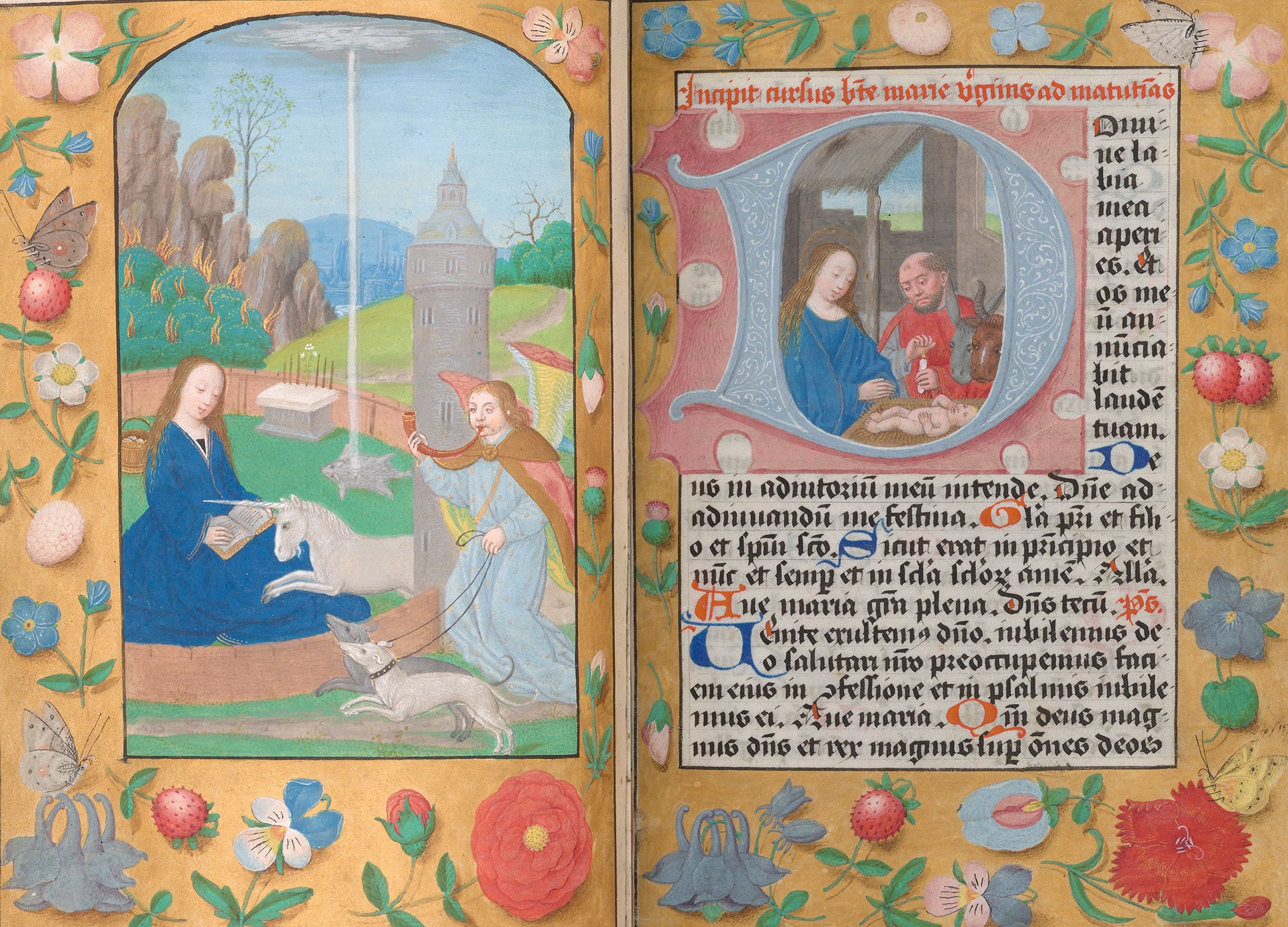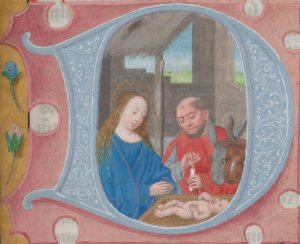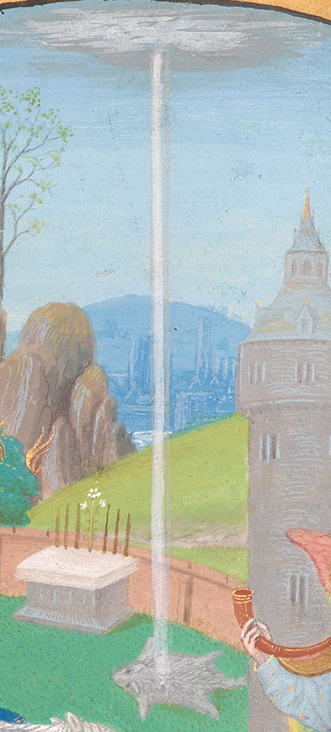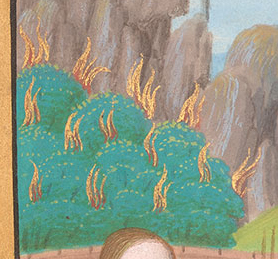Images of Our Lady in the Liturgy of January 1st
by Fr. William Rock, FSSP
The Feast celebrated by the Latin Church on the first day of January is an interweaving of three themes – the Octave Day of Christmas, the Circumcision of the Lord, and the Blessed Virgin Mary.
Many of the Propers of the Mass are drawn from the First and Third Masses of Christmas, reflecting the celebration of the Octave. The Gospel is the only Proper of the Mass which references the Circumcision, giving St. Luke’s account of it. Mary has only a small, direct reference in the Propers of this Mass that is in the Collect. While the presence of her theme in the Mass is small, it is more prominent in the Office of the Day. All of the Antiphons for First and Second Vespers and Lauds (and the applicable Minor Hours also) reference her, and the Psalms for both Vespers are taken from the Common of the Blessed Virgin Mary.
The second and third of these Antiphons are worth examining as they present Mary in types from the Old Testament.

It is part of the perennial Catholic method of interpreting Scripture to read, along with the Literal Sense, various Spiritual Senses. One of these Spiritual Senses is the Allegorical Sense in which things of the Old Testament (types) signify the things of the New Testament (antitypes), or in which things in the New Testament signify other things in the New Testament. St. Thomas explains how this Allegorical Sense is possible in the following manner: “The author of Holy Writ is God, in whose power it is to signify His meaning, not by words only (as man also can do), but also by things themselves” (S.T. I, q. 1, a. 10).
That is, God, Who is All-Knowing and All-Wise, can use real existing things, persons, and events and have them point towards other things, persons, and events which will be in the future. With this understanding, we can now examine these two Antiphons.
The text of the Second Antiphon, and the first to present Mary under a type, reads as follows:
| Quando natus es ineffabíliter ex Vírgine, tunc implétæ sunt Scriptúræ: sicut plúvia in vellus descendísti, ut salvum fáceres genus humánum: te laudámus, Deus noster. | When thou wast born all ineffably of a Virgin, then were the Scriptures fulfilled; thou camest down like the dew upon the fleece of wool, to bring salvation unto all mankind; we praise thee, O our God. |
First, this Antiphon references the prophecy of the Virgin Birth in Isaiah – “Therefore the Lord himself shall give you a sign. Behold a virgin shall conceive, and bear a son and his name shall be called Emmanuel” (Isa 7:14).
 This is a foundation prophecy with respect to the Messiah and His mother foretelling that He will be conceived and delivered by a virgin. This will be a sign from God, for such a thing can only be accomplished by divine power. In the second part of the Antiphon, the Blessed Virgin is represented by “a fleece of wool,” while Christ her Son, Whom the Antiphon is addressing, is likened to dew falling on the fleece.
This is a foundation prophecy with respect to the Messiah and His mother foretelling that He will be conceived and delivered by a virgin. This will be a sign from God, for such a thing can only be accomplished by divine power. In the second part of the Antiphon, the Blessed Virgin is represented by “a fleece of wool,” while Christ her Son, Whom the Antiphon is addressing, is likened to dew falling on the fleece.
This is a reference to the fleece put out by Gedeon. Gedeon was tasked by God lead the Hebrews into battle. Gedeon sought a sign that God was with him and would give him the victory –
And Gedeon said to God: If thou wilt save Israel by my hand, as thou hast said, I will put this fleece of wool on the floor: if there be dew in the fleece only, and it be dry on all the ground beside, I shall know that by my hand, as thou hast said, thou wilt deliver Israel. And it was so. And rising before day, wringing the fleece, he filled a vessel with the dew (Jud 6:36-38).
 This fleece of wool is a type of the Virgin Mary because it was filled in a miraculous way, a way which defies the normal course of nature.
This fleece of wool is a type of the Virgin Mary because it was filled in a miraculous way, a way which defies the normal course of nature.
Normally, when there is dew in the morning, everything (or at least most things) which can be covered in dew is covered, not just one item among the many, as was the case with Gedeon’s fleece. In a similar way, the Blessed Virgin Mary was filled with the Christ-child in a way contrary to the normal course of nature, as she conceived him in a miraculous way without knowing man.
It should be noted that the translation provided above is a bit of an interpretation of the Latin.
The portion of the Antiphon which reads “sicut plúvia in vellus descendísti” is taken from Psalm 71, verse six, and translates literally as “thou camest down as rain upon the fleece.” Psalm 71 is a messianic Psalm and the portion quoted by the Antiphon is, according to St. Augustine, a reference to Gedeon’s fleece and the dew (“ros” in Latin).
It is worth noting that in the Psalm, the verb is in the future tense as a prophecy, while in the Antiphon, it is in the past tense as a prophecy fulfilled. The use of “pluvia/rain” in place of “ros/dew” can also point the one praying to another prophecy of Christ found in Isaiah – “Drop down dew, ye heavens, from above, and let the clouds rain the just/rorate caeli desuper et nubes pluant iustum” (Isa 45:8).
In this passage, the verb for rain (“pluant” from “pluere”) is used. This passage from Isaiah is widely used during Advent and it is the refrain of the hymn “Rorate Caeli” as it is a prophecy of the Just One, the Messiah, Who is to come.
The text of the Third Antiphon is drawn from earlier in salvation history than the event of Gedeon’s fleece and reads as follows:
| Rubum, quem víderat Móyses incombústum, conservátam agnóvimus tuam laudábilem virginitátem: Dei Génetrix, intercéde pro nobis. | In the bush which Moses saw unconsumed, we recognize the preservation of thy glorious virginity: holy Mother of God, intercede for us. |
 As the Antiphon itself states, the bush which Moses saw – burning yet unconsumed – is a type of Mary; more specifically her virginity. For as the bush produced fire and all that goes along with it without suffering any type of injury or detriment, so Mary conceived and brought forth her Son.
As the Antiphon itself states, the bush which Moses saw – burning yet unconsumed – is a type of Mary; more specifically her virginity. For as the bush produced fire and all that goes along with it without suffering any type of injury or detriment, so Mary conceived and brought forth her Son.
The Church teaches that Mary was a virgin before, during, and after the birth of Our Lord and that throughout all of this, she did not suffer any physical detriment which mothers normally would – not just in His conception but also in His delivery.
Arguing this point, St. Thomas points out that Isaiah’s Prophecy of the Virgin Birth reads that a virgin will not only conceive, but also bear her son, thus indicating that Mary remained a virgin during the birth of Christ (S.T. III, q. 28, a. 2, c).
The virgin conceiving and bearing a son, Gedeon’s fleece miraculously filled with dew, the bush producing fire yet suffering no detriment, are all prophecies or types of the Blessed Virgin Mary.
For these two Antiphons, as in many other places, the Church draws from her rich understanding of Scripture to ornament her liturgy, inviting her children to contemplate the truths of faith, not here through theological discourses, but through images which capture the imagination and invite further reflection and investigation.
And in this way, by striving to understand the connections made by Holy Mother Church, one’s intellect will continually be formed with regard to the study of Scripture, the study of the liturgy, indeed all aspects of the faith, according to the mind of the Church which, in turn, develops an ever-deepening appreciation for the riches she sets before us.
Fr. William Rock, FSSP was ordained in the fall of 2019 and is currently Assistant Pastor at Mater Misericordiae parish in Phoenix, AZ.
January 27, 2021








